Performance Roadblocks of the 7.3L Power Stroke
At the conclusion of our Project Paw-Paw series, an ambitious undertaking that more than tripled the amount of power a 7.3L Power Stroke was making, we were inundated with questions as to why it’s so hard to make big power with the ’94.5-’03 diesel-powered Fords. In addition to the mods required being a bit costly, there are several aspects of the 7.3L V8’s design working against it when pursuing big horsepower. First and foremost, the HEUI injection system—even with the great advancements it’s seen in injector, high-pressure oil pump and tuning technology in recent years—remains the biggest performance obstacle. Despite these tremendous strides, hydraulically actuated fuel injection is still no match for today’s high-pressure common-rail diesel injection systems.
Beyond the inherent roadblocks that exist within the HEUI injection system, the 7.3L’s cylinder heads and OEM turbocharger greatly hamper airflow. Opening up the heads and matching them with the right cam can yield considerable gains, but due to cost, demand, enthusiast desire or all of the above, few 7.3L owners venture down this path. And while T4 turbo systems paired with big hybrid fuel injectors do yield fairly solid power gains, peak power still tops out between 600 and 650rwhp—good numbers for a 7.3L, but more or less par for the course for modern day diesels. For a closer look at what really holds a 7.3L Power Stroke back, keep reading. Some of the following information may even leave you wondering why anyone attempts to make power with the 7.3L Power Stroke at all!
HEUI
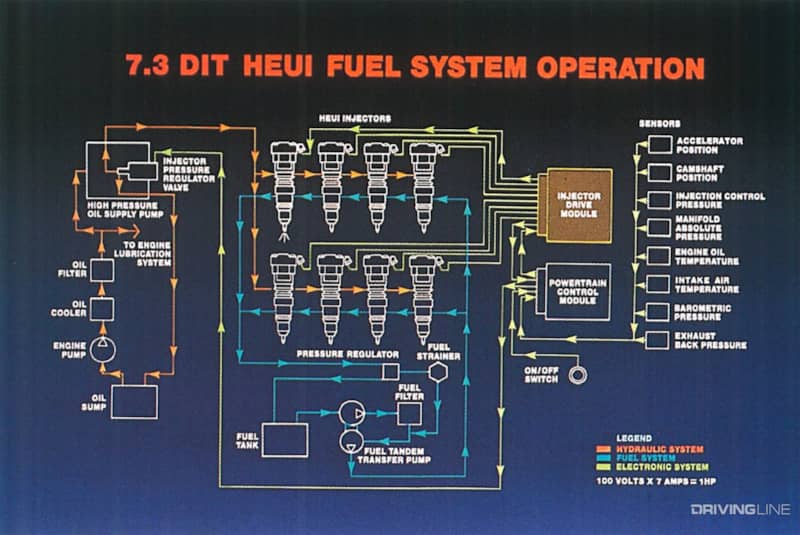
Thanks to its ability to meet emission regulations and customers’ performance expectations in the mid 1990s, the hydraulically actuated electronically controlled unit injector (HEUI) system made its debut aboard the 7.3L Power Stroke. Navistar, the manufacturer of the 7.3L Power Stroke for Ford, leased the original HEUI technology from Caterpillar and also implemented it on its own medium duty engines such as the T444E (Navistar’s version of the Power Stroke), DT466E and I530E. The system uses highly pressurized engine oil to actuate the fuel injectors. It consists of a traditional low-pressure oil pump feeding a high-pressure oil pump, which sends highly pressurized oil to the oil rail in each cylinder head. From there, the high-pressure oil patiently awaits its chance to enter the top-side (oil side) of each injector.
Big Power HEUI Problem #1: Oil Supply
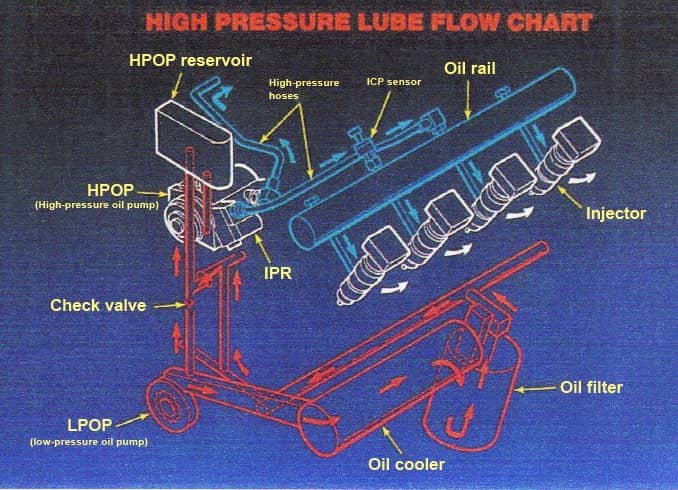
At stock power levels, the HEUI system serves its intended purpose both sufficiently and reliably. However, attempting to triple the power output of the engine, its fueling is a tall order. Not only do you have to worry about maintaining adequate high-pressure oil pressure (also known as injection control pressure, or ICP) but you have to ensure that the low-pressure oil pump is up to the task of supplying the high-pressure pump enough oil volume to make that happen. After all, the low-pressure oil pump is also responsible for maintaining the oil pressure required to keep the engine lubricated and its bearings alive.
Big Power HEUI Problem #2: Building Oil Pressure in the Injectors
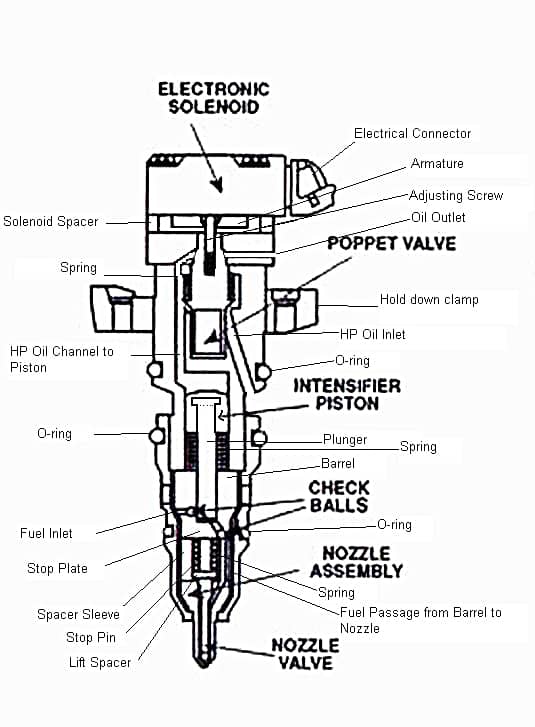
When the injector’s solenoid is energized by the electronic pulse it receives from the injector driver module (and as commanded by the powertrain control module), the armature plate lifts, which in turn lifts the poppet valve off of its seat. The poppet valve is the (highly restrictive) component that allows high-pressure oil to enter the top side of the injector. However, roughly 550-psi worth of pressure must be transferred on top of the intensifier piston (also known as the amplifier) before it begins traveling downward. When the intensifier piston begins its descent, the fuel nozzle’s needle lifts and the plunger begins to push fuel out of the nozzle, thereby spraying diesel in-cylinder.
Big Power HEUI Problem #3: Maintaining Oil Pressure in the Injectors
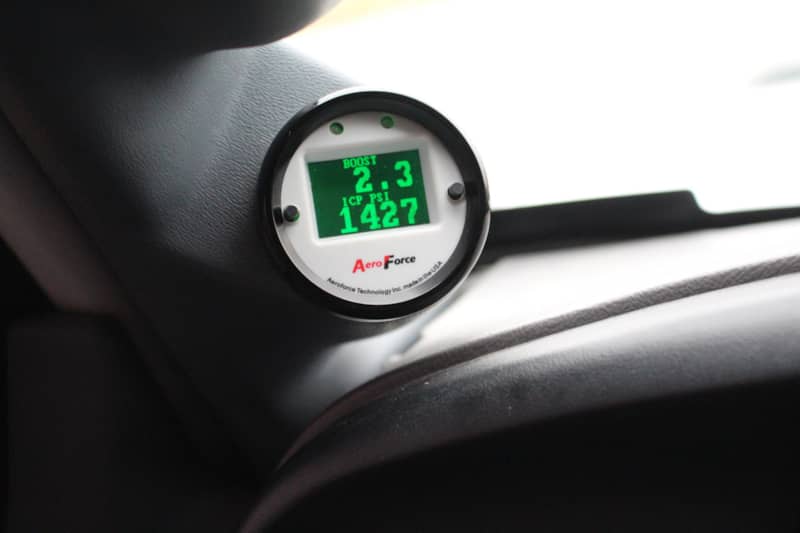
As the intensifier piston strokes downward within the injector, more high-pressure oil is allowed to fill the cavity above it. However, as this happens a pressure drop occurs across the restrictive poppet valve. In extreme performance applications, the high-pressure oil can’t fill the left over void quick enough, and if you can’t maintain high-pressure oil in the HEUI system you will never make power. In many instances, the intensifier piston simply travels faster than the oil above it can get into the injector.
A Fix with A Trade-Off: Hybrids
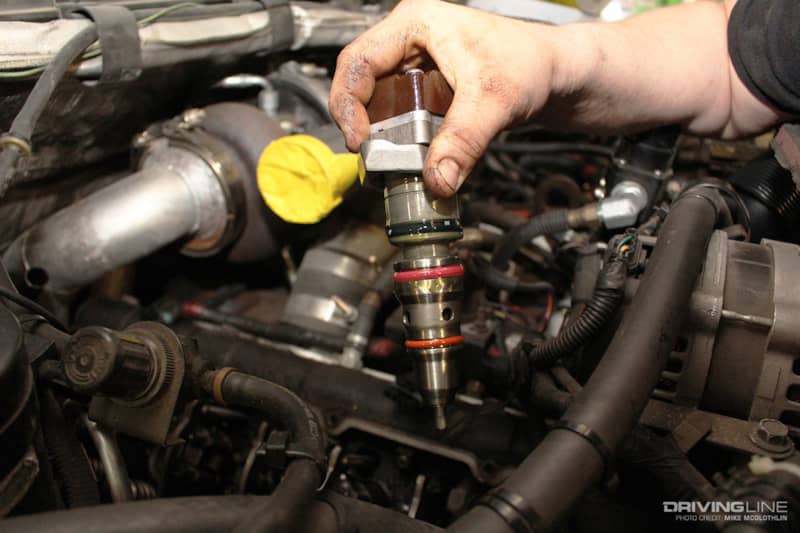
The best possible solution for dealing with the restrictiveness of the poppet valve and the high-pressure oil drop it causes is the hybrid injector. By using a larger diameter plunger and barrel (oftentimes the 7 mm version from the I530E Navistar engine’s “BD code” injector) but retaining the factory 16mm intensifier piston, the injector’s fuel capacity is greatly increased without requiring more high-pressure oil to force the additional fuel in-cylinder. The trade-off is that injection pressure at the nozzle drops to roughly 16,000 psi vs. 21,000 psi stock. The lower in-cylinder injection pressure leads to less atomization, but when a hybrid is fitted with a large nozzle the horsepower gains are often worth the loss in efficiency.
Not Like Common-Rails
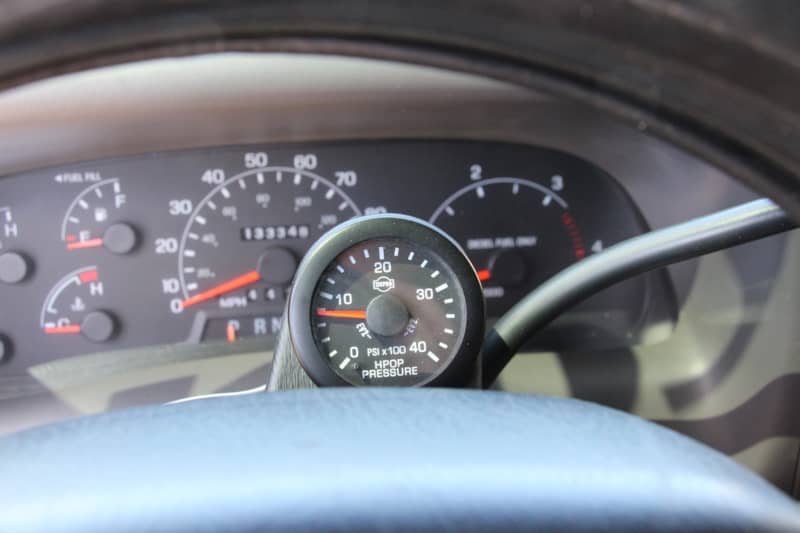
When the injection pressures employed in common-rail systems, most of which were engineered to handle considerably more pressure than they left the factory producing, are cranked up 5,000 to 10,000-psi higher than stock in race applications, increased power is the result. We’re talking 30,000-plus psi here. In the 7.3L HEUI system, pushing high-pressure oil well beyond generally accepted norms (3,200 psi on the high-pressure oil side and 16,000 to 22,400 psi at the injector nozzle on the fuel side) isn’t known to yield similar power gains. The best thing 7.3L owners can do is make sure adequate injection control pressure is always available, which is often accomplished by running dual high-pressure oil pumps.
Dismal Head Flow
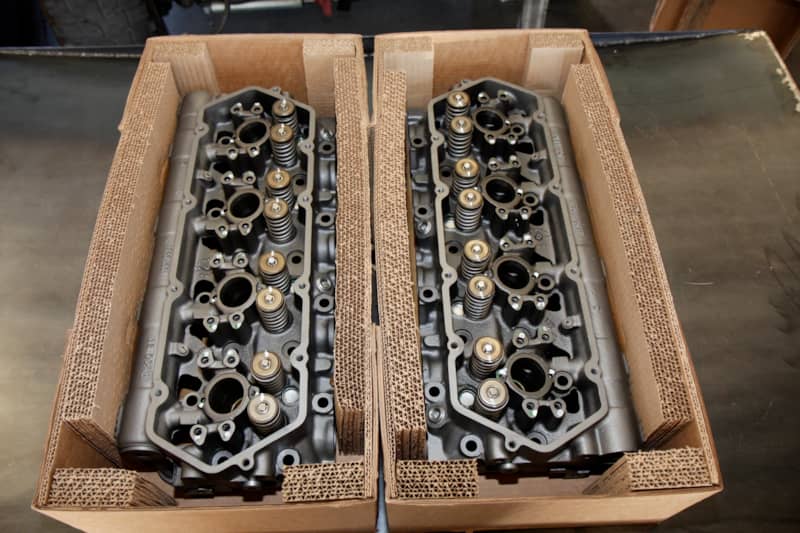
Another major area of restriction on the 7.3L exists in its cylinder heads. The 2-valve per cylinder cast-iron heads breath even worse than a Cummins 12-valve head on the flow bench. The intake side flows just 110 to 115 cfm per cylinder (vs. 140 to 150 cfm on the Cummins 12-valve head). Once enthusiasts started to dig into the 7.3L’s heads, several gearheads found that intake flow could nearly be doubled with good port work. If you’re looking to get past the 600 to 650rwhp wall with a 7.3L, CNC porting and a performance valve job will need to be part of the equation.
Head Work & The Right Cam Makes a Difference
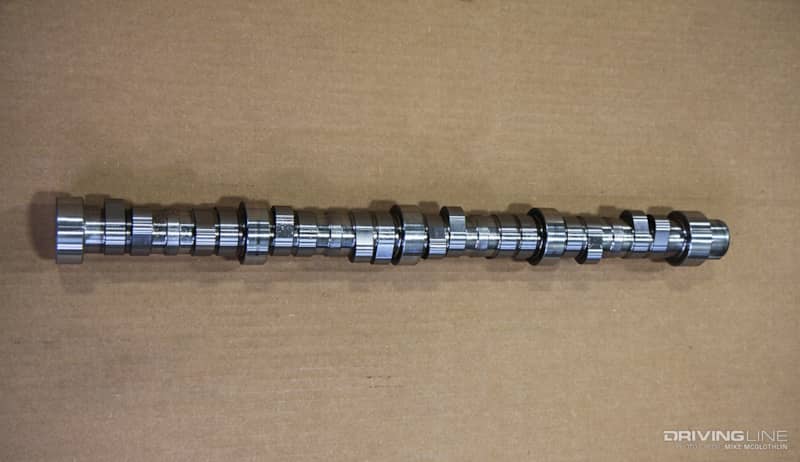
While opening up the 7.3L’s heads is definitely a step in the right direction, matching them with the right camshaft is a must. After all, you can get a pair of 7.3L heads to flow twice what they did stock, but it won’t do it at factory cam lift levels. Once you know what the heads flow, you can select the best off-the-shelf or custom grind cam to fit your needs. Not surprisingly, head work, an aftermarket cam and all the things that come with it (i.e. valve relieved pistons, possible machining of the valve guides, etc.) can be very cost-prohibitive for the owner of a 25-year-old engine platform. So while the horsepower wall can definitely be breached, most opt to live under (or up against) the 7.3L’s 600 to 650rwhp ceiling.
Case In Point
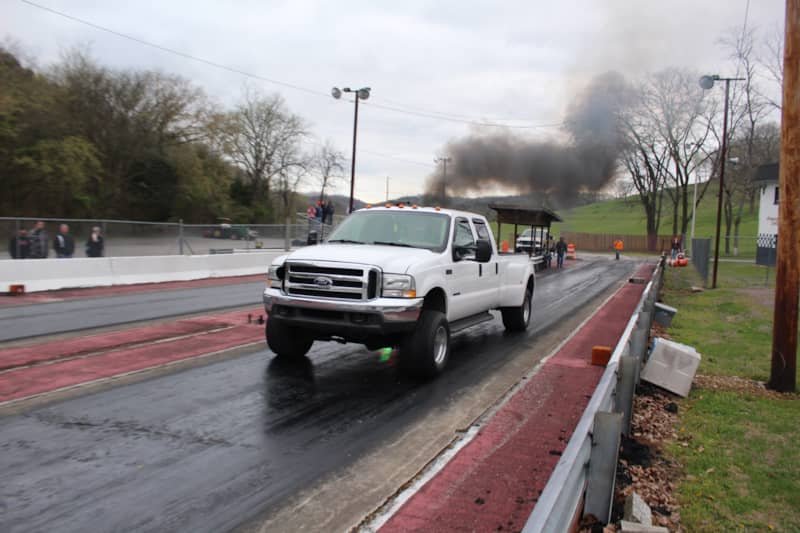
One enthusiast who’s figured out a sound cam and head recipe is Scott Morris, who’ve we’ve showcased on Driving Line in the past. According to his 7.30-second eighth-mile passes at 96 mph at the track and the weight of his compound-turbo’d ’00 F-350 (an 8,200-pound dually), Scott’s 7.3L is making more than 950rwhp. Long time drag racer, Brian Jelich, also picked up 100 hp by installing a Stage 2 Gearhead cam and a set of Crutchfield Machine heads on his single turbo’d 7.3L.
Another Choke-Point: Factory (and Factory-based) Turbo Options
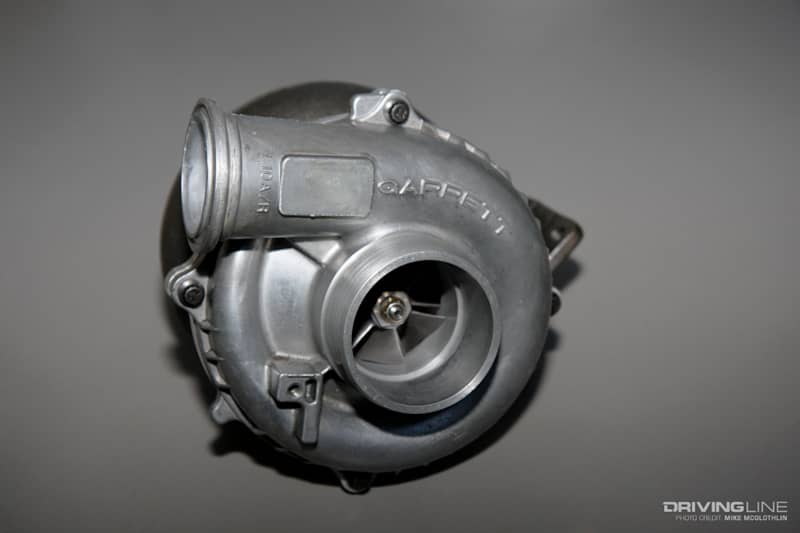
While late-model, common-rail diesel engines can squeeze 500rwhp or more through the turbocharger they leave the factory with, the 7.3L’s fixed geometry Garrett is on borrowed time at the 400rwhp mark, if not sooner. On top of that, there are very few factory-based turbo options that can support more than 525rwhp (but one company that is squeezing quite a bit out of bolt-on turbo options these days is KC Turbos). For ultimate flow and near-limitless sizing options, complete T4 turbo mounting systems such as the kits offered by Irate Diesel Performance are a solid choice for making big power. Compound turbo arrangements are also viable options, but most of these configurations are custom-built and (surprise, surprise) hard on the wallet.
Ready to see the 7.3L Power Stroke pushed to its very limit? Check out the 5 most extreme examples we’ve come across right here!











